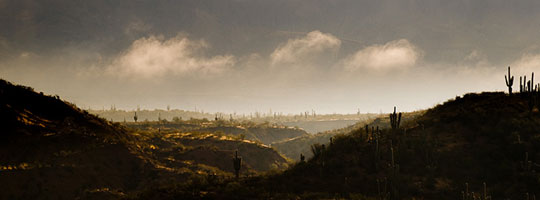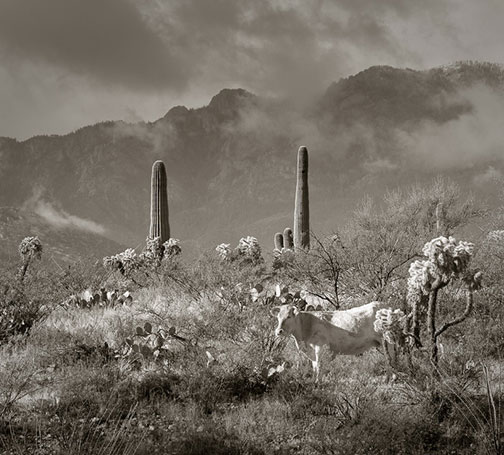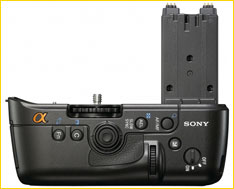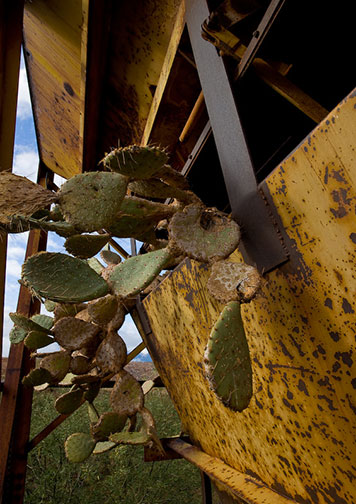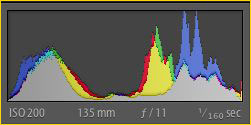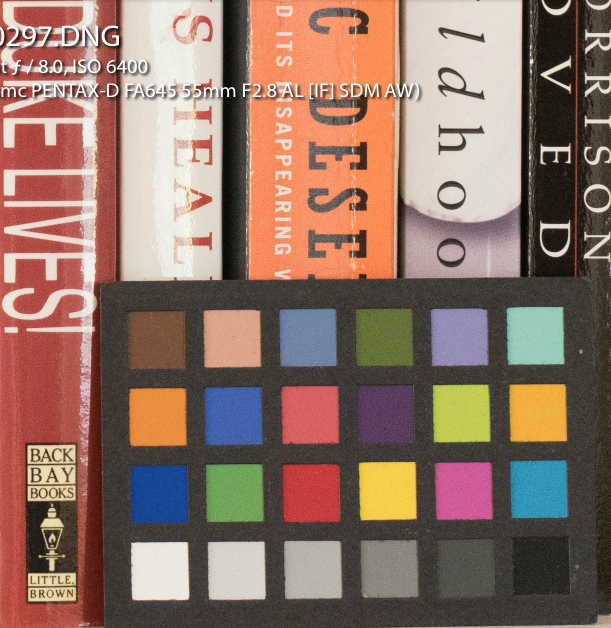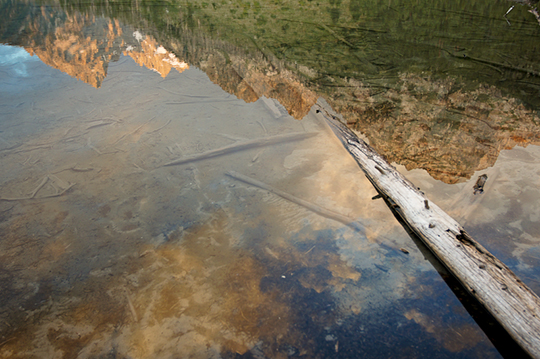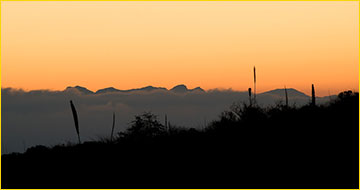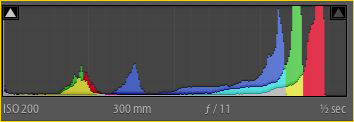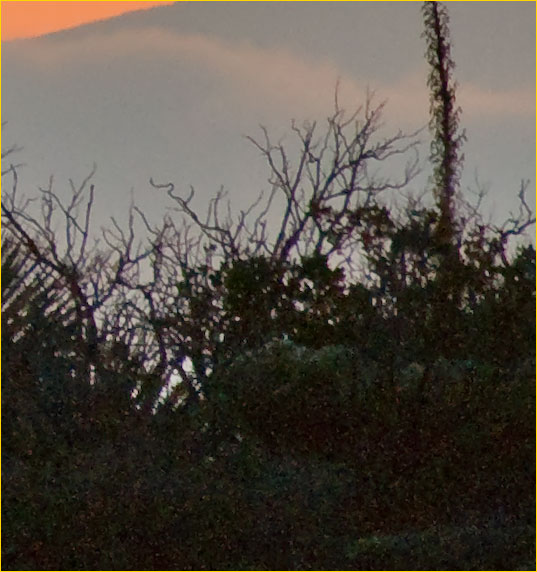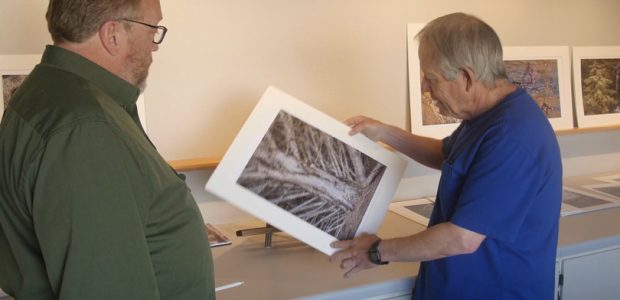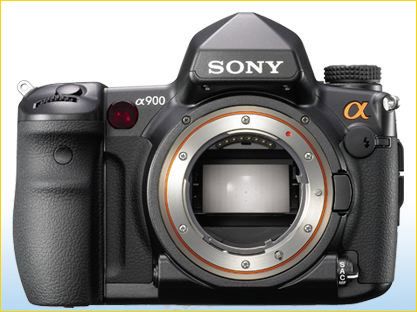
I always have a soft spot in my heart for the underdog. It’s all too easy to back an established winner. Boring even. The new kid on the block often needs a friend, though if he turns out to be a jerk, or untrustworthy, the friendship doesn’t last for long.
Sony is, of course, one of the largest names in the consumer electronics business but a relative newcomer to the DSLR market. This came about through the acquisition a few years ago ofKonica / Minoltawhen that company decided to exit the business. The last time I reviewed a KM product was the last of that company’s top-of-the-line cameras, theMaxxum 7d, which I wrote about quite favourably here in 2004.
Since their acquisition of KM Sony has introduced several new cameras, beginning in 2006 with the A100, and now culminating in Q4, 2008 with their flagship, the 24.6 Megapixel A900 – currently the world’s highest resolution full frame DSLR. With it Sony joins Canon and Nikon in being the only three companies to currently produce full frame cameras with sensors above 20 Megapixels
TheSony A900is a very serious undertaking for that company, and is a camera to be reckoned with. Sony plays to win, and it becomes a dominant force in virtually every segment of the consumer and professional electronics industry that it chooses to participate in. (One of their only failures was with Betamax, but they then transformed that format into a professional product and went on to dominate the broadcast industry with it for the past 20 years.) So, as we look at the A900, think of it not just as a new high-end DSLR, but also as Sony’s stake in the ground – claiming their intention to become a major player in the DSLR marketplace.
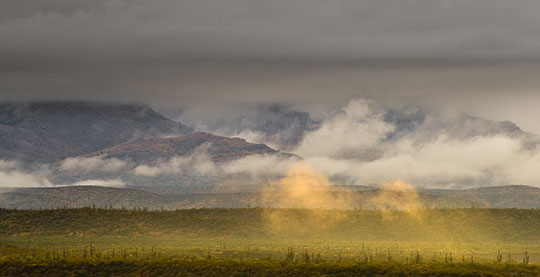
Arizona Dawn – Coronado National Forest, Arizona. November 2008
Sony A900 with Sony 70-300mm f/4.5-5.6
ISO 200. 1/20 Sec @ f/16
____________________________________________________________________________________
The Competition
Taking on Nikon and Canon in the pro market won’t be easy. It may not even be possible, or for that matter even Sony’s intention. To meet the needs of professional photographers one must have a network of rental houses, a pro support program such as NPS or CPS, and a much more comprehensive lens line that Sony can currently muster, or which it likely can produce even over the next few years. The two dominant players each have lens line-ups numbering more than 40 current optics, including a variety of super telephotos, tilt / shift lenses and other specialty lenses that Sony lacks.
But Sony is not without strengths in the lens department. Its new G series are very good indeed, equal to Canon’s L lenses and Nikon’s gold ring glass. Sony also has an alliance with Zeiss, ones of the world’s most respected lens makers, and some new Zeiss lenses for the Sony Alpha line, such as their 24-70mm Vario-Sonnar f/2.8, are exceptional in their image quality.
Nevertheless, I doubt that Sony intends to compete for the pros, though many pros will find a lot to like in the A900. Instead I would guess that Sony is targeting the high end amateur – someone who values what Sony can provide – namely exceptional handling and build quality, great optical quality, class leading resolution, and possibly most interestingly, the fact that it’snota Nikon or Canon. Oh yes, and aggressive and competitive pricing.
While many people derive identity and satisfaction from owning a heavily advertised brand name, others find satisfaction in being contrarian in owning something different; in not running with the herd. I think that the A900 will strongly appeal to people such as this.
But enough speculation. Let’s get down to cases and see what the Sony Alpha 900 is all about.
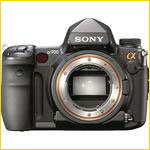
____________________________________________________________________________________
The Specs
Battery
The A900’s battery ia a NP-FM500H of relatively small size. The first time I used the camera was in temperatures around 0C (32F) and after a day of shooting found the battery showing empty after some 230 frames. A few days later, in Arizona where temperatures averaged about 18C (65F) I got 260 shots before the battery indicated that it was close to giving up the ghost. This compares poorly to larger bodied cameras such as the Canon 1D and Nikon D3 series with their much larger batteries. A second, or even a third battery will therefore be a must for location work. (Some people have written to say that they are getting much better battery life than this. I can only report on my experience with two separate batteries under the conditions under which I’ve been using the camera.)
Like all Sony products the A900 features that company’sInfoLithiumtechnology which accurately reports on the battery’s percentage charge remaining.
In-Body Anti-Shake
Whether due to patent restrictions, or just engineering decisions, Sony has adopted an in-body vibration reduction system rather than one built into individual lenses. From what I have read and my own empirical evidence, it appears to be every bit as competent as the IS and VR systems that Canon and Nikon build into some of their lenses.
And therein lies one of the benefits of the Sony approach. Being in the body rather than the lens means thateverylens enjoys the benefits of vibration reduction, not just specially designed ones. While moderate focal length and wide angle lenses don’t require stabilization as much as do long lenses, they definitely can benefit from it, and the two stop gain that it provides is most welcome, especially when using specialty optics that wouldn’t normally have stabilization.
There is a downside though to in-body shake reduction, and that is that its effect isn’t visible in the viewfinder. I don’t see this as a deal breaker, but some folks might. Of course it does nothing to change the look of the eventual picture taken, though it does add a comfort level when shooting to be able to see that shake is being reduced.
Sony does provide a real-time gauge in the viewfinder that shows how much shake reduction is going to be applied, which is helpful.
One area where the latest Canon and Nikon IS and VR lens systems have a small edge is that they sense when the camera is tripod mounted and turn themselves down or off. The A900 doesn’t do this, and so with the camera firmly tripod mounted if you don’t turn stabilization off you’re in fact going to get blurry images as the system tries in vain to compensate for vibration that isn’t there. I find that I usually remember to turn anti-shake off, but if I do I invariably then forget to turn it back on when switching back to hand holding.
Dust Removal
In a feature found in almost every contemporary camera, and in addition to moving the sensor during the moment of exposure to reduce shake, the sensor itself vibrates when the camera is turned on and off so as to remove dust. As with other cameras featuring dust removal, it works, but isn’t foolproof. I found it worthwhile to turn the camera on and off every now and then, rather then just let it go to "sleep", so that the dust shake function would be activated, especially after changing lenses. It’s not 100% effective – none of them are, but it sure is a lot better than a system without it.
No Live View – No Video
It’s curious that Sony didn’t build Live View capability into the A900, since almost every other camera introduced by them and everyone else over the past 18 months has this feature. It can be quite a handy feature too, as photographers who have come to expect it will agree. Maybe there’s a technical limitation with regard to the A900’s large high resolution sensor, or some other technical consideration, but its lack is definitely felt.
Beginning with the Nikon D90 and then the Canon 5D MKII, video capability in DSLRs is becomingde rigeur. Obviously the reason that the A900 doesn’t have it is because it doesn’t have Live View; the two are inextricably linked. Maybe video capability is less desired by some than is Live View, but having a high-end camera released in late 2008 without these two features is a bit of a puzzler, and will exclude the A900 from some photographer’s consideration, regardless of the camera’s other merits. It’s not a deal breaker for me though given the A900’s other benefits.
Arizona Welcome. Coronado National Forest, Arizona. November, 2008Sony A900 with Sony 70-300mm f/4.5-5.6
ISO 250. 1/320 Sec @ f/9Intelligent Preview
Sony includes a feature in the A900 calledIntelligent Preview. Some reviewers have seen this as a sort of replacement for Live View. I don’t see any similarity between them at all.
When you press the Depth of Field preview button a temporary image is shown the the rear LCD. You can then adjust exposure values, white balance and such and these changes are displayed on-screen along with a full RGB histogram. Press the DISP button and you can toggle between before and after views, or simply press the delete button to trash the whole thing. But if you like the way your changes look, press the shutter release and the changes made are applied to anewphotograph taken. The Preview shot itself can not be saved.
My guess is that what the camera is doing is storing some form of compressed raw file in memory and then applying on-the-fly JPG reinterpretations as adjustments are made. In any event, it’s a neat feature which some photographers will find useful but which many likely won’t. I only wish that it also allowed image magnification to check focus.
In The Cards
The A900 features two card slots, just like the pro-level Canon 1Ds series and the Nikon D3. But whereas Nikon offers two CF card slots, and Canon a CF slot and an SD slot, Sony offers a CF slot and a Memory Stick Duo slot.
Memory Sticks are a real pain. They are proprietary to Sony, more expensive than SD cards, and also require different readers. So, while Sony is to be applauded for having two slots in a camera at this price point, I do wish that they’d get off the Memory Stick stick.
More to the point, they haven’t designed the dual card capability with any of the flexibility that Nikon and Canon have. In other words, on the A900 you can manually choose to save files to one card or the other, and that’s it. With Nikon and Canon you can choose to save raw files to one and JPGs to the other, to allow overflow when the first card is full, and other niceties. Given that this is simply firmware programming, it’s quite remarkable that Sony didn’t bother to add these capabilities, especially since so much else in the A900 is so thoughtfully designed.
No Audio
The A900 does not have any audio note recording capability. A shame, since I use this a lot on location.
Speed
For such a large sensor the A900 can shoot at quite a high rate, Using a 16GB Sandisk Extreme IV CF card (capable of 45 MB/s) I was able to record almost exactly the claimed 5 FPS in raw; actually 15 frames in 3.1 seconds. After 15 frames the buffer is full and a new shot can be taken at the rate of exactly 1 FPS until the buffer had cleared. Superb performance for a 25MP camera.
Micro AF Adjustment
Minor front focus and back focus problems are not common with most camera and lens combinations, but they do happen. In mid-December I will be reviewingLensAligna new highly accurate and yet simple to use tool for adjusting cameras. It’s worth noting that Sony joins Nikon, Canon and Pentax with select cameras in having the ability to make such adjustments on a per-lens basis.
And just for the record, I found zero front or back focus with my Zeiss 24-70mm and the Sony 50mm f/1.4, and a small front focus shift with the Sony 70-300. Don’t read too much into this though because as you’ll read in my LensAlign review, the need for these adjustments is totally dependant on each specific camera and lens.
Flash Hot Shoe
Sony gets marked down big-time for sticking with Minolta’s proprietary flash mount hot shoe. If it was just a matter of being stuck using their proprietary flash it would be one thing, but not being able to use a flash trigger for studio use, such as a Pocket Wizard, is a real failing. Sony does havean adaptorfor $129, but it really shouldn’t be necessary to have to purchase something like this and have one more bulky battery-operated gizmo to keep track of. It also means that the camera lacks a regular shoe, useful for bubble levels, flags and such.Booon Sony. Bad design decision. (Mention of lacking PC sync terminal removed. It does have one. Sorry for the confusion.)
Open Range – Coronado National Forest. Arizona, November, 2008Sony A900 with Sony 70-300mm f/4.5-5.6
ISO 320. 1/250 Sec @ f/13Vertical Grip
The VGC90AM vertical grip is not terribly expensive, adds bulk and weight, but also adds excellent vertical handling to the A900. It allows two batteries to be carried simultaneously. It auto-switches between them when the first runs low. In my experience it is the only add-on grip that duplicates virtually every control on the main camera body. It makes the interface look complicated, but once you’re familiar with it convenience and functionality are first rate.
Given the moderate price I think this should be in most A900 photographer’s kits, although I find myself using the camera without it most of the time, since it’s the A900’s less than "pro" size that appeals to me. When shooting in winter though, with heavy gloves on, I find the extra handling surface to be a plus, and the dual releases a must. In fact, the vertical grip is if anything even more comfortable than the one on the camera, and that’s saying a lot.
____________________________________________________________________________________
In Hand
Though on the beefy side (not as small as a Canon 5D MKII or Nikon D700, but much smaller than a 1D series or D3 series), the A900 fits even small hands comfortably. There is an ergonomic thumb rest and the front and rear control wheels fall nicely under ones fingers.
Screens
Unlike other largish camera bodies with comprehensive top panel LCDs for reporting most settings and functions the A900 has a small LCD and next to it four buttons. These are for Drive Mode, Exposure Compensation, White Balance and ISO. The top LCD reports on the status of each of these when pressed, and also battery level and frames remaining. That’s all. Everything else is set via the rear 3" LCD.
The rear colour LCD screen , as you’d imagine from a Sony product, as very clear and bright – visible in almost any light. It needs to be, because with its reduced reporting chores things which would normally be visible and settable via the top LCD need to be set via the rear screen instead. This means that this screen is active quite a bit more than one might otherwise be used to if coming from a Nikon or Canon system.
For this reason the camera features a eye detection system which turns the rear LCD screen off the moment that the camera is brought to ones eye.
Viewfinder
The A900’s viewfinder is a joy. Large, bright and with a high eye point this is as good a viewfinder as one will ever find in a 35mm format DSLR. I wouldn’t swear to it being better than a 1D series or a D3, but if it isn’t it’s as least as good. Simply first rate.
The illuminated display beneath the ground glass is minimal in its information, reporting aperture, shutter speed and frames left to fill the buffer. Anti-shake warning and an exposure compensation scale round it out. There is no ISO indication except when one is pressing the top panel ISO button, something which I found unsatisfactory.
As is now the norm, the A900’s viewfinder has a diopter adjustment as well as a lever activated eyepiece cover and rubber surround.
Focusing Screen
Focusing screens on the A900 are interchangeable but I found the one supplied to be quite acceptable when manual focusing, in large part because of the very large and bright viewfinder.
Controls
Other than the four functions on the top panel already mentioned, there is a control for autofocus mode setting on the left front of the camera, in the same position as found on Nikon’s (and not as easily moved by accident as it can be on that make’s bodies). The only other major mechanical control is that for metering mode, which is found on the rear, just to the right of the eye piece.
All other settings are performed on the rear LCD through the use of a rear-panel, thumb controlled joystick. This is quite nicely executed, in fact it’s the biggest and most accurate to control joystick on any camera that I’ve tried. Press the rear button marked FN (for Function) and a range of settings are displayed in graphical form. Move the joystick and press it inwards to make a setting. Items such as White Balance, ISO and focus modes are accessible through here, duplicating what can be done via the top panel buttons and top LCD. This is somewhat redundant, but handy.
I was surprised that the autofocus selection tool was only available this way, as the camera lacks a direct mechanical control system for this. Surprising given the high level manual accessibility that the camera has, especially as compared to Canon’s current design idiom.
There is a large accessible sliding switch for the antishake system, handy since one should turn it off when the camera is tripod mounted.
Power to the camera is switched on and off via a large sliding switch to the left of the viewfinder, and on the top left panel is a mode setting dial. This is large, clear (no useless dummy modes cluttering it up) and it has very firm detents. Too many cameras have weak detents that are all too easy to knock off position, especially when wearing gloves. Nicely done Sony.
(If you lived in a country that has 4 months of solid winter you’d be concerned about gloves as well)
Also nicely done are the three custom setting positions. The camera is almost totally configurable and up to three of these settings combinations can be set – then called up by one of these three positions. So, for example, setting 1 can have multi-point autofocus, wide area metering, high speed advance and Program mode for spontaneous action shooting, while settings 2 can have spot metering, variable point autofocus and 2 second timer with mirror lock-up, for tripod work. (Attention Canon – self timer on the Sony has MLU, done the way its supposed to be).
Overgrown. Coronado National Forest. Arizona, November, 2008Sony A900 with Sony 24-70mm f/2.8
ISO 200. 1/80Sec @ f/14Histogram
The camera displays (optionally) a very nice four channel histogram (luminance + RGB). Flashing highlights are displayed, and so too are shadow areas, and there’s no way to disable this. While some people will appreciate having both, I find it distracting as it’s really only the highlights that I care about. I wish that this was alterable through a custom function.
Remote Commander
The A900 ships with a small IR remote control, similar to those found with video cameras. This is used primarily when the camera is attached via HDMI to a display screen, as almost all playback controls are duplicated.
Interestingly the remote also has a shutter release mode so it can be used as a wireless remote when shooting. Potentially very cool.But only potentially.
First of all, the sensor is in front of the camera (in the hand grip). This obviously means that it only works when you’re standing in front of the camera, not behind it, not the usual place for photographers to stand.Duhh!(Indoors in a small room the IR may work since the signal may be reflected, but outdoors this is never the case).
Another annoying aspect, given how useful this could have been, us that there is also a 2 second self timer release, but there’s no way to combine this with mirror lock up, since these are found on mutually exclusive settings in the Drive menu setting.
Come on Sony! This is almost as bad as the designfaux pasusually found from the other guys. Doesn’t anyone ever actually ask photographers to field test these things before committing to production? The difference betweengoodandgreatis when you sweat the small stuff, and this is all small stuff.
____________________________________________________________________________________
Resolution / Noise / Dynamic Range
Pick Any Two
Image Performance
Software
One can’t discuss image performance based on camera generated JPGs. Since I don’t shoot JPGs, particularly with a high performance camera such as this, I can’t comment on how well or poorly the A900 does with its internal JPG processing.
As regular readers know I am a strong proponent ofAdobe’s LightroomandCamera Raw, and regard them as state of the art in raw file processing, both from a user interface perspective and also (usually) in terms of image quality.
I have done all of my Sony testing using Lightroom with built-in support for the A900’s files. I have also tried Sony’s provided software on the Mac,Image Data Lightbox SR(a file browser) andImage Data Converter SR, a raw processor.
As is almost universally the case with camera manufacturer’s software they may know how to extract great image quality from their files, but their user interface is very poor and usability simply isn’t up to contemporary standards. Enough said, other than if you do use their raw processor be sure to turn of Auto noise reduction, because though it does eliminate noise in even high ISO files it does so mercilessly at the expense of image detail. There are better ways.
Resolution
My subjective evaluation of the Sony A900’s image quality can be broken down into three areas – noise, resolution, and dynamic range. On the resolution front first, it can be said that when used with a lens capable of showing what this sensor can do, the A900 is the highest resolving DSLR that I’ve ever used. I have not yet had an opportunity to work with the just announced Nikon D3x, but when I do I will conduct an informal four way shoot-out between the Canon 5D MKII, 1Ds MKIII and the Sony A900. Notwithstanding this upcoming comparison, anyone buying an A900 can be confident that there’s nothing else anywhere near the A900’s price range that can beat it in terms of resolving power. Simply outstanding when used with the best lenses.
Noise
Unfortunately this excellence is not the case when it comes to sensor noise. This camera’s sensor appears to trade off resolution for noise at higher ISOs, and though ISO 200 is very clean indeed even it isn’t completely noiseless. At ISO 400, one stop higher than the cameras native sensitivity, there is some luminance noise visible in mid-tone areas. A bit of luminance noise reduction in Camera Raw or Lightroom quashes it nicely, but at the expense of a bit of resolution.
Using standards of 2–3 years ago noise performance at ISO 400 is fine, but not as compared with other lower resolution cameras of today. (The Canon 5D MKII is likely to significantly outperform it based on my evaluation of images from an early pre-production camera.We’ll soon see. The Nikon D3X is at this point an unknown quantity in this regard).
By ISO 800 noise is unavoidably obvious and there is a bit of visible chroma noise as well. This can be tamed a bit in the raw converter, and isn’t too objectionable in prints up to about 13 X19", but is quite noticeable on screen at higher magnifications.
Sensitivities above ISO 800 I regard as unacceptable for fine art prints and publication quality images, unless a special effect is intended.
The frame above is straight from the camera with Lightroom’s default settings in the Prophoto RGB colour space. Below it is the histogram of the ISO 200 version. Full dynamic range is captured with no blown highlights or shadows – a technically correct exposure. Below are slices at 100% at each major ISO setting. Only the shutter speed was varied.
ISO 100 ISO 200 ISO 400 ISO 800 ISO 1600 ISO 3200 NA NA ISO 6400 These examples really tell the story. There is always some slighttexture(it’s unfair to call it noise) even at 200, and this remains visible but totally unobjectionable up to and including ISO 800. A bit of luminance smoothing is all it takes to clean it up. Starting at 1600 chroma noise seriously appears and luminance noise reaches the point that you might want to start using a heavier duty noise reduction plug in or program. I don’t regard 3200 and 6400 as terribly useful.
ISO 100 is similarly not that useful either. There’s no noise advantage to using it, and dynamic range is seriously reduced. You’d be better off using an ND filter if ISO 200 is problematic for you from an exposure point of view.
Noise Sidebar
I had an opportunity to discuss the A900 with wildlife photographer Andy Biggs, who shot with an A900 on a recentPolar Bear shootin the Canadian Arctic.
We were discussing the noise characteristics of the A900 and a point that Andy made, with which I agree, is that unlike some cameras the noise on the A900 isstochasticin nature. In other words, less grid-like and more random. This makes it much less objectionable to the human eye, and so when noise characteristics are compared numerically this perceptual nuance is not factored in, yet it can mean a considerable difference in the way that we perceive noise. In other words, noise with the A900 at higher ISOs (at least up to ISO 1600 when chroma noise starts to kick in), is visually less objectionable than it is on some other cameras which claim lower noise. Morefilm like, and lessdigitalin other words.
It’s also worth noting that according to DxOMark the A900 slightly outperforms the well regarded original Canon 5D in terms of noise.
Dynamic Range
This, together with resolution, is an area where the A900’s sensor sings. I have rarely seen such wide dynamic range from any camera, including some medium format backs. On my shoot in Arizona I was able to capture scenes with brilliantly illuminated clouds along with deep shadows, and hold detail in both places. When combined with the sensor’s high resolution, for landscape work its hard to think of another camera currently available that is a more suitable tool, and at under $3,000 this level of performance is unparalleled. Just a few years ago it took a medium format back costing $30,000 to generate comparable images. And while today’s MF backs still have an edge, the price differential is significant.
Arizona Dawn – Coronado National Forest, Arizona. November 2008Sony A900 with Sony 70-300mm f/4.5-5.6
ISO 200. 1/2 Sec @ f/11The above shot serves to illustrate the amazing dynamic range that the A900 is capable of. The file, and the histogram in Lightroom, showed nothing in the lower part of the image. Effectively 0-0-0; a silhouette. But with the Fill Light tool in Lightroom I was able to open up this essentially nonexistent shadow area and pull out some decent detail. Some noise as well, to be sure, but a much more interesting image as a consequence. Almost HDR in its capability.
Immediately above is the file as seen without opening the shadows, and also the original histogram in Lightroom’s Prophoto RGB colour space. Below is a 100% crop. Noisy in the shadows? Yes. But in a print, as opposed to 100% pixel peeping, the noise is not objectionable.
Again, referring back to DxOMark, the A900 has higher dynamic range than any 1 Series Canon or the Nikon D3. Only the Nikon D90 and Fuji S3 and S5 outrank it, but then none of these have anything like the resolution of the A900.
Bits
While on the subject of image quality, it needs to be mentioned that the A900 is a 12 bit camera, while most of its contemporaries are 14 bit. While much of the time this will not produce a noticeable difference, when working with images that need shadows opened up or other stretching of the tonal range, the disadvantages of 12 bit may start to become visible. The advantage of course is faster shooting capability, as mentioned, up to 5 FPS.
But again, in terms of Colour Depth rating on DxOMark, the A900 beats any camera except the Canon 1Ds MKIII, including 14 bit heavy hitters like the Nikon D3.
____________________________________________________________________________________
Autofocus
Autofocus on the A900 is competent, though not in the same league as that on Canon and Nikon’s top-tier cameras. It has nine points with 10 helper points as well, and modes for single lock on, optionally with auto switch-over to tracking, and continuous focus mode. One can also use the rear joystick to manually set the desired point, though only among the primary 9 points.
I found that AF worked well in low light, but in multi-point seemed less likely to select the correct point that either of its top end competitors. For landscape work I simply turn off the sync between the shutter release and AF and use the dedicated AF button to lock focus, just as I do with my other cameras. Lenses also feature an AF on and off mode as well as having this settable via the menus.
____________________________________________________________________________________
Lenses
With its 25MP sensor the A900 demands top-quality lenses. Herein lies a problem. The Sony lens line currently has just a handful of lenses which are optically good enough to support what the camera’s sensor can deliver.
Many of Sony’s lenses are simply cosmetic redesigns of KM lenses from the 70’s and 80’s. Many are quite good, but as we now known from experience with high resolution sensors on Canon full-frame cameras, 20+MP sensors are unforgiving, not just in their ability to demand resolution but they also require high levels of freedom from optical aberrations. Film masked a lot of sins which a high res sensor doesn’t.
One also needs to note that most of the KM lenses use mechanical drive autofocus, making them slower and noisier than those using Sony’s latest SSM autofocus system. Included in this group are some exceptional primes though, such as the Zeiss Sonnar 135mm f/1.8 and the Zeiss Planar 85mm f/1.4.
More SSM lenses have been announced, but at the moment there are two lenses which I feel form the core of a lens system for the A900 and the ones that I purchased. These are the Zeiss Vario-Sonnar 24-70mm f/2.8 and the Sony 70-300mm G f/5.6. Both are SST autofocus designs. The Zeiss zoom is, in a word, superb; just about as good as it gets in terms of optical quality in this focal range. The short Zeiss zoom is also at the high end of the price range, though not priced too dissimilarly from Nikon and Canon equivalents. The Sony 50mm F/1.4 rounded out my kit, adding wide aperture and small size for when needed. This appears to be a very competent lens, fully the equal of its Nikon or Canon counterpoints.
I am very partial to both the 24-70 and 70-300 and have little negative to say about either of them. My only real complaint is that the bokeh (out of focus highlight rendition) is somewhat poor on the Zeiss. This is a shame because otherwise the lens offers exceptionally high performance, nicely matching the extremely high resolving power of the A900.
My hope is that Sony will become more aggressive in developing and issuing new lenses if they really want to attract a high-end audience for their new high end camera. A 24mm Tilt / Shift would be most welcome.
____________________________________________________________________________________
DxOMark Analysis
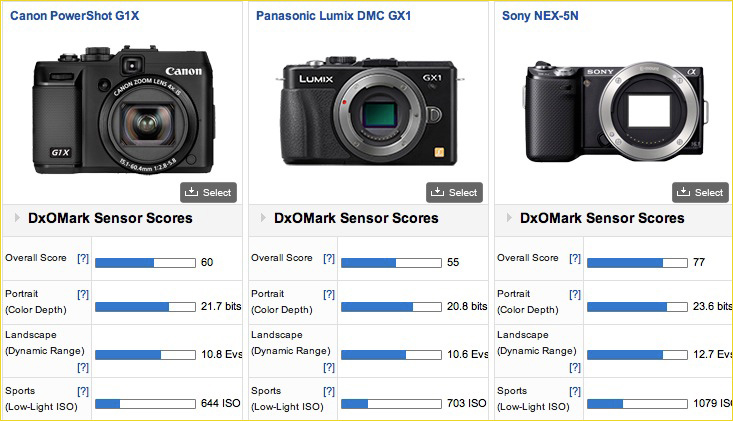
Not thatDxOMarktells us everything about a camera’s performance, not by a long shot (otherwise why bother writing these reviews), but it does give us some points of objective / relative comparison on the technical side of the ledger.
In the screen grab above you see a graph showing overall camera performance (limited – of course – just to DxO’s criteria) plotted against price. The highlighted triangle is the Sony A900. The way to read the graph is that the further to the right, the higher the price, and the higher up the graph the higher the performance. Therefore, the highest performing camera at the lowest price is at the top left.
This turns out to be the Nikon D700. I’d not surprised. It represents amazing performance and value. But the camera that comes in in the number two spot, the one highlighted, is the Sony A900. The performance ranking is slightly lower – 78.9 Vs. 80.5 (nit pickingly small), and the list price is slightly higher. This and some other comparative details are shown below.

Of course the area where the Sony fails to match the Nikon is in high ISO performance. Then again, at the time of this writing, other than the D700’s big sister the D3, nothing can match Nikon’s low noise performance (I have not yet tested this on the new Canon 5D MKII). But, what the charts and graphs at DxOMark don’t convey, though the numeric comparison does, is that while the Nikon D700 is a 12 Megapixel camera, the Sony A900 is an almost 25 Megapixel camera.
Now the comparison comes into focus, so to speak, and the magnitude of Sony’s accomplishment becomes a bit more clear. From an almost standing start three years ago (standing on Konica / Minolta’s shoulders, of course), Sony has produced a camera and system that challenges revitalized Nikon’s best, and which stands up very well against market leader Canon as well.
Of course specs, megapixels and market share aren’t the be-all and end-all of camera goodness, but the story that we see here is one that needs to be borne in mind if you want to understand the evolution of the DSLR industry, and also make a solid buying decision while keeping your options open.
____________________________________________________________________________________
Contax RTSIII Redux
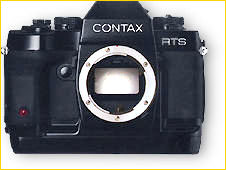
Do you remember theContax RTS III? If you were involved in photography during the 1990s the RTSIII, the culmination of the Contax line and possible the finest manual focus film-based SLR ever, will elicit fond memories.
It may be a bit of stretch, but I find the Sony A900 to have some of the DNA of the RTSIII. Maybe it’s the blocky sold body design, maybe the incredibly robust feel, and possibly the sense that the controls are designed by and for photographers. Though clearly from a different gene pool, I am reminded of the Contax when shooting with the Sony. Of course it could be just that the A900 uses Zeiss lenses, which were one of the compelling attractions of the Contax camera system. In any event – RIP Contax, welcome Sony A900.
____________________________________________________________________________________
Compared to…
In the light of the just announced (Dec 1, 2008) price for the Nikon D3x (US $8,000) the inherent goodness of the Sony A900 comes into focus (no pun intended). For the cost of a D3x one can buy a Sony A900 plus the exceptional Zeiss 24-70mm f/2.8 lens, the very fine Sony 70-300mm f/4.5-5.6, a Sony A700 body as a backup, a flash, a couple of 16 GB high speed memory cards, and still have enough left over to pay the sales taxes. The same goes for the Canon 5D MKII, though you’ll have to pick two or three of your favourite lenses from that company’s lens line-up and something like the 50D body as backup instead.
Of course the Canon 1Ds MKIII is closer in terms of build and price to the D3x, but typically is retailing for some $1,500 less.
So, since this is a Sony A900 review, let’s see what this camera gives up for the roughly five thousand dollars difference in price against the Nikon D3x. Let’s put image quality aside for the moment, since in early December as this is being written this remains an unknown. It needs to be cautioned though that in today’s marketplace image quality has become generally so high that the real-world non-pixel-peeping differences are becoming diminishingly small.
Both cameras offer 24 Megapixel resolution and can shoot raw at 5 FPS with large buffers. The A900 is smaller and lighter, but the D3x has superior weather sealing. Both cameras feature very large bright viewfinders. The Nikon is a 14 bit camera while the Sony is 12 bit. Then again, the A900 has built-in sensor based stabilization so that even wide angle lenses are stabilized, and it also has sensor dust removal through sensor shake, while the Nikon has none. Both cameras offer dual memory cards, but the Sony has CF and Memory Stick, while that in the Nikon is an intelligent dual CF cards system.
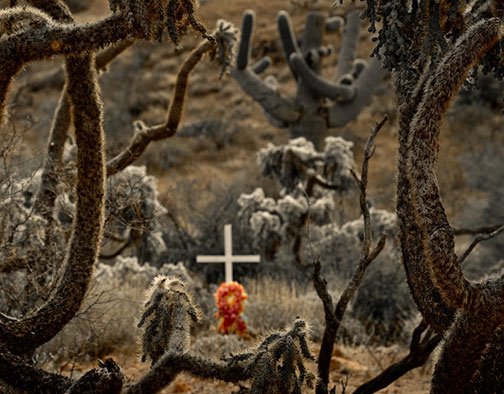
Cactus Grave. Mammoth, Arizona. November, 2008
Sony A900 with Sony 70-300mm f/4.5-5.6
ISO 250. 1/60 Sec @ f/11
____________________________________________________________________________________
Conclusion
So here we are. Show time. Is the Sony A900 the camera for you?
If you currently have Canon or Nikon lenses it’s a tough call. Canon owners have the option of the new 5D MKII at a price comparable to the A900, complete with video capability and Live View, so I don’t see too many defections from that camp.
For the Nikon camp, at least those who want or need resolution higher than 12MP, the D3x is an attractive but really expensive call. Though there’s likely a lower cost version on the way at some point, a 24MP D700x for example, my sense is that this may be some time off. The current almost $4,000 sensor premium of the D3x over the otherwise identical D3 simply doesn’t translate into a D700x appearing any time soon.
For those without major lens commitments to other brands the Sony A900 offers tremendous value for the money. In almost every objective test criteria measured on DxOMark the A900 comes in in the top two or three, and in many categories does so against camera either costing twice as much or offering half the resolution. While not the king of any one hill, it is a sterling all-around performer in almost every category.
When it comes to build quality and handling, the A900 has little to fault and much to like. Yes, I’ve bitched about a few things in the above review, but then there’s always something to criticize, because no product is perfect. It just comes down to the compromises that one is will to make.
These are hard economic times for almost everyone, and the indications are that things are going to get tougher before they get any better. In that type of climate a good all-rounder at a competitive price is what’s needed, and the Sony A900 DSLR offers just that, along with class leading resolution.
I believe that for the first half of 2009 the two hot pro and serious amateur cameras are going to be the Canon 5D MKII and the Sony A900, both priced under US $3,000 and both offering some unique features and capabilities.
I hope to have a shoot-out between these two contenders here in the near future.
Canadian Sidebar
The Sony A900 is currently selling in the US for $2,999 at most dealers. Interestingly, it sells at retail in Canada for the same price, except in Canadian dollars. Since in early December, ’08 the US dollar is worth about $1.24 CDN, the A900 actually is selling in Canada for about US $2,400. Simply a hell of a deal.
Unfortunately for Americans Canadian dealers are unable to ship this product to the US, but there’s a real price arbitrage opportunity going on here.
December, 2008
You May Also Enjoy...
VJ-Reply
Order Confirmation Thank you for your order! We greatly appreciate your business. You will shortly receive an e-mailed confirmation of your order. Video Journalorders will
Shooting With The Masters – Charles Cramer Part 4
FacebookTweet Diving Into Printing The Masterfile As Charlie has explained and will continue to explain through the next three videos he makes use of a

